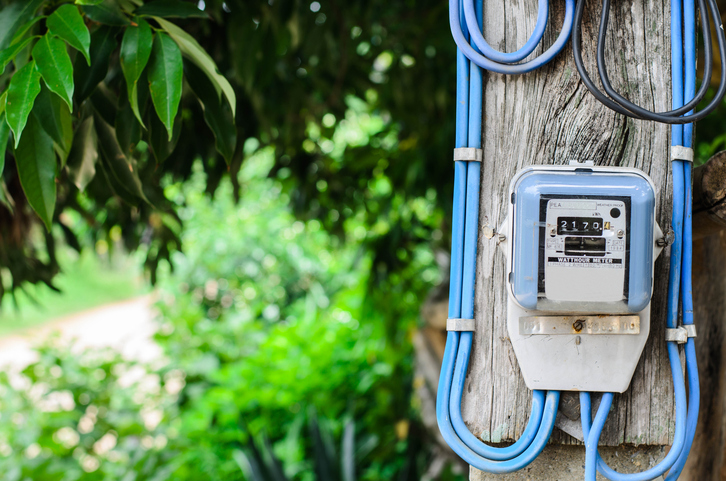
Privacy Concerns With Interval Data
Urjanet Inc | July 20, 2017 | Energy & Sustainability
With the rapid growth of smart meters, advanced metering infrastructures, and real-time communication networks, the number of electric utility customers who have access to interval meter data has increased dramatically.
Now, with the adoption of open data standards like Green Button Data, more than 60 million households and businesses can access their energy usage data from their electric utility. This presents an invaluable opportunity for energy managers of buildings and organizations who are looking to reduce energy consumptions.
Usage data could also be utilized for any number of cutting-edge innovations like home automation companies, such as Nest, who might use meter readings as a foundation to build the next smart thermostat. Researchers could study the data to learn why energy consumption varies across regions. However, this has also raised concerns about confidentiality with nearly real time electricity monitoring.
What Is Interval Data and Why It Is Important
Before discussing the issues of privacy with smart meters delivering interval data, it is important to know how interval data works and why it is important in energy monitoring. Interval data is time-stamped utility values recorded every 15 to 30 minutes, unlike a utility bill that only reports data once a month. This type of frequent reporting offers increased resolution and diagnostic capabilities, such as identifying energy use peaks, and spotting trends that indicate problems, such as equipment not operating at an efficient energy level.
Give your energy management program a strategic boost with interval data.
Privacy Concerns
In March of this year, a pair of privacy groups urged the Seventh Circuit to find that the Fourth Amendment protects data generated by smart meters, arguing that the granular details produced by these increasingly prominent readers are “far more intimate” than cumulative information collected periodically from more traditional analog meters. Guy Herbert, general secretary of NO2ID, a public campaign group argues that smart “meters are presented as an environmental and power-saving initiative. But it’s a highly surveillant model. It can tell how many showers you have had, when you are cooking, when you are in and out of the home.”
With these concerns in mind, we now see smart meter and interval data technology advancing to include anonymized interval energy data usage via ComEd’s Anonymous data service, which gathers data by zip code with any identifying characteristics of “fine grain” information on power use scrubbed. In addition, external parties have 35 days to download the requested unspecified data through a secure ShareFile system, after which access to the data ceases.
On the other hand, the Electricity Networks Association insists the data its members gathered was safeguarded. Chief executive Graeme Peters said there was nothing new in what his members were doing because “data on customers has been collected for about a century. And it was more necessary now than ever because of pending electricity reforms…We are looking at more cost reflective pricing and we need to get access to data on customer demand at half-hourly intervals and the peaks [of their usage].”
Industry body Smart Energy GB takes a similar line. “Your smart meter stores and transmits simple information on how much energy your home has used. Personal details like your name, address and bank account details are not stored on or transmitted by the meter. Your supplier can’t use any data from your smart meter for sales and marketing purposes unless you give them permission to do so.”
Moving Forward
The future of accessing interval data is on an upward trajectory and will continue to evolve. In fact, the smart meter and interval data market is anticipated to reach USD 49.9 billion by 2025, according to a new report by Grand View Research. Despite the promise of empowering people through enhanced data access and savings, the issue of privacy will continue to be a sensitive issue. Whether or not new laws will be placed to protect consumer’s privacy is still unclear, but one thing is for certain: Interval data will always have a place in effective energy management.
Thoughts to share on interval data? We’d love to hear from you on Twitter! And if you’re ready to learn how Urjanet’s Utility Data Platform can help you leverage your interval data, contact us today.
Related Resources:
- Announcing: Urjanet Utility Interval Data
- 5 Use Cases for Whole Building Interval Data
- The Untapped Potential of IoT and Sustainability
If you like what you’re reading, why not subscribe?
About Urjanet Inc
Urjanet, the global leader in utility data aggregation, simplifies how organizations access and use utility data, enabling them to focus on their business. Our technology collects, processes, and delivers data from over 6,500 electric, natural gas, water, waste, telecom, and cable utilities worldwide.
You May Also Like
Support Business Continuity by Embracing ESG
Honor Donnie | March 18, 2022 | Energy & Sustainability
